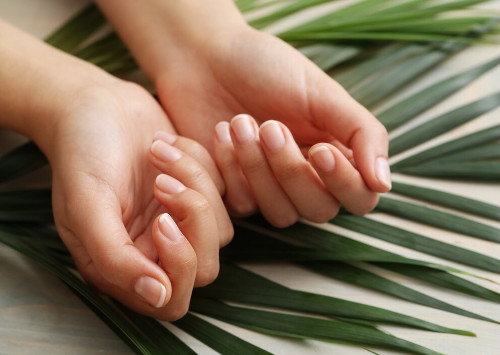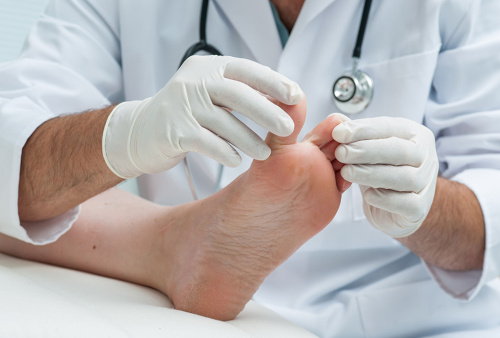Treatment and diagnosis of nail fungus

specialists

equipment

treatment
Types and stages of development of nail fungus
Main types
Onychomycosis appears in various forms, each of which has its own characteristics. The following types are distinguished:
- Distal - the most common type, in which the fungus affects the edge, spreading deep under the plate
- Superficial - characterized by the appearance of white spots and stripes on the surface
- Proximal - a rare variant in which the fungal infection begins at the base of the nail and spreads to its edge
- Total dystrophic - the most severe form, in which the plate is completely affected by the fungus and destroyed
Classification according to Arievich
According to the classification proposed by Arievich in 1970, onychomycosis is divided into the following types depending on external manifestations and the degree of damage:
- Normotrophic - the plate retains its shape, but yellowish or whitish stripes appear
- Hypertrophic - the nail turns yellow, thickens due to the formation of hyperkeratosis under it, becomes more brittle and may have uneven edges
- Dystrophic - there is thinning that separates from the nail bed, forming voids
Each of these types and types of onychomycosis requires an individual approach to diagnosis and treatment. It is important to consult a specialist in time at the first signs of the disease in order to prevent its spread and complex damage to the plates.
Recognition

General characteristics include:
- Color change, which may turn yellow, gray or white
- Thickening of the plate, its curvature
- Fragility and fragility
- Unpleasant smell from under the nail
- Softness and crumbliness in advanced stages
Fungus on the big toe is especially unpleasant.
In the early stages of the disease, symptoms may be subtle or absent altogether, complicating diagnosis. If you notice any of the above-mentioned signs, it is recommended that you do not put off visiting a dermatologist. Timely treatment increases the likelihood of a full recovery and helps prevent further spread of the infection.
General information about the procedure
Taking care of your nails after curing the fungus
Returning to healthy nails after defeating mycosis requires careful and long-term care.
Enrich your diet with foods rich in vitamins and minerals to support your immune system and promote healthy nail growth.

Here are a few key points to help speed up the recovery process and minimize the risk of reinfection:
- Regular check-ups with a dermatologist Keep your nails under control by regularly visiting a specialist to prevent relapses
- Hygiene and care Keep your nails clean and dry, trim them carefully and use natural-based care products
- Long-term prevention Do not stop following preventive measures, even after complete recovery. This will help against re-infection
Our doctors

This award is given to clinics with the highest ratings according to user ratings, a large number of requests from this site, and in the absence of critical violations.

This award is given to clinics with the highest ratings according to user ratings. It means that the place is known, loved, and definitely worth visiting.

The ProDoctors portal collected 500 thousand reviews, compiled a rating of doctors based on them and awarded the best. We are proud that our doctors are among those awarded.
Make an appointment at a convenient time on the nearest date
Price
Other Services
Helio therapy
Manual therapyPlantar warts
Diabetic foot











Causes and risk factors for nail mycosis
Nails not only decorate us, but also reflect our overall health. Mycosis, also known as onychomycosis, is widespread. Not only does it cause physical discomfort, but it can also signal other health problems. It is important to pay attention to this problem in a timely manner in order to maintain health and prevent the development of the disease. Mycosis affects the plate and sometimes the skin around the nail. Affects people of all ages, but the elderly and those with immune problems are especially vulnerable.
It is important to know the reasons for effective prevention and treatment. The main culprits are various types of fungi. They are found everywhere, but certain conditions can promote their penetration into the plate.
Risk factors include visiting public places with high humidity, such as spas, swimming pools, and fitness clubs. Diseases that weaken the immune system (such as diabetes or cirrhosis of the liver) increase vulnerability to infections. Synthetic shoes and socks that do not allow air to pass through also create a favorable environment for the development of fungi.
Awareness of the causes and risk factors contributes to the prevention of the disease. Attention to personal hygiene reduces the chance of infection.